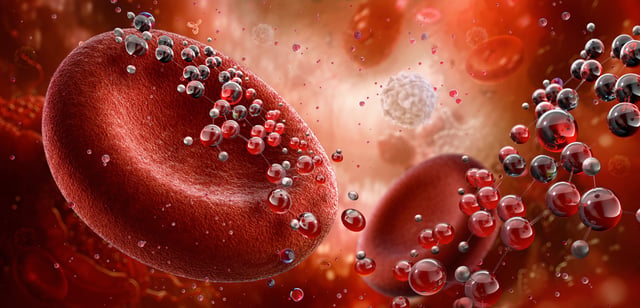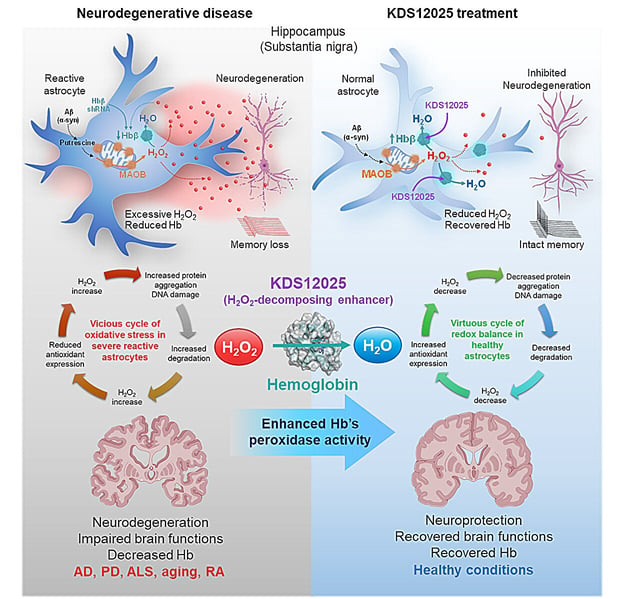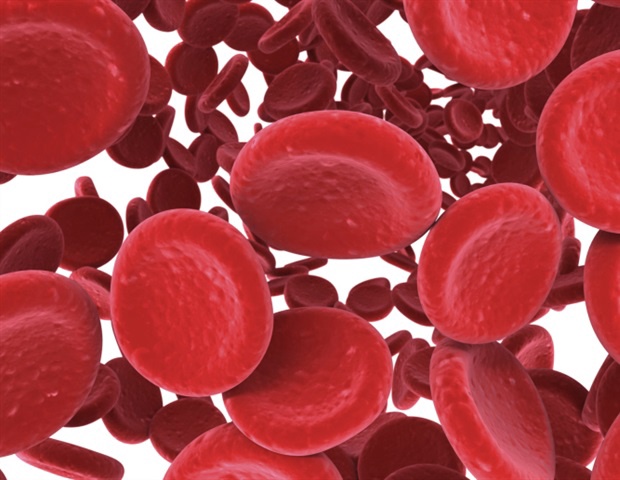Overview
- Researchers report that hemoglobin inside astrocyte nucleoli acts as a pseudoperoxidase that breaks down hydrogen peroxide into water.
- They developed KDS12025, a water‑soluble small molecule that crosses the blood–brain barrier, binds hemoglobin’s heme, and boosts H2O2 decomposition by about 100‑fold without impairing oxygen transport.
- Oral administration in mice reduced oxidative stress, normalized reactive astrocytes, and preserved neurons, delaying ALS onset and extending survival by more than four weeks.
- KDS12025 restored motor function in Parkinson’s models, improved memory in Alzheimer’s models, extended median lifespan in aged mice, and reduced inflammation in a rheumatoid arthritis model.
- The study identifies a harmful loop in which excess peroxide depletes astrocytic hemoglobin; KDS12025’s benefits required astrocytic hemoglobin, and the team plans mechanistic and medicinal chemistry work before human testing.



